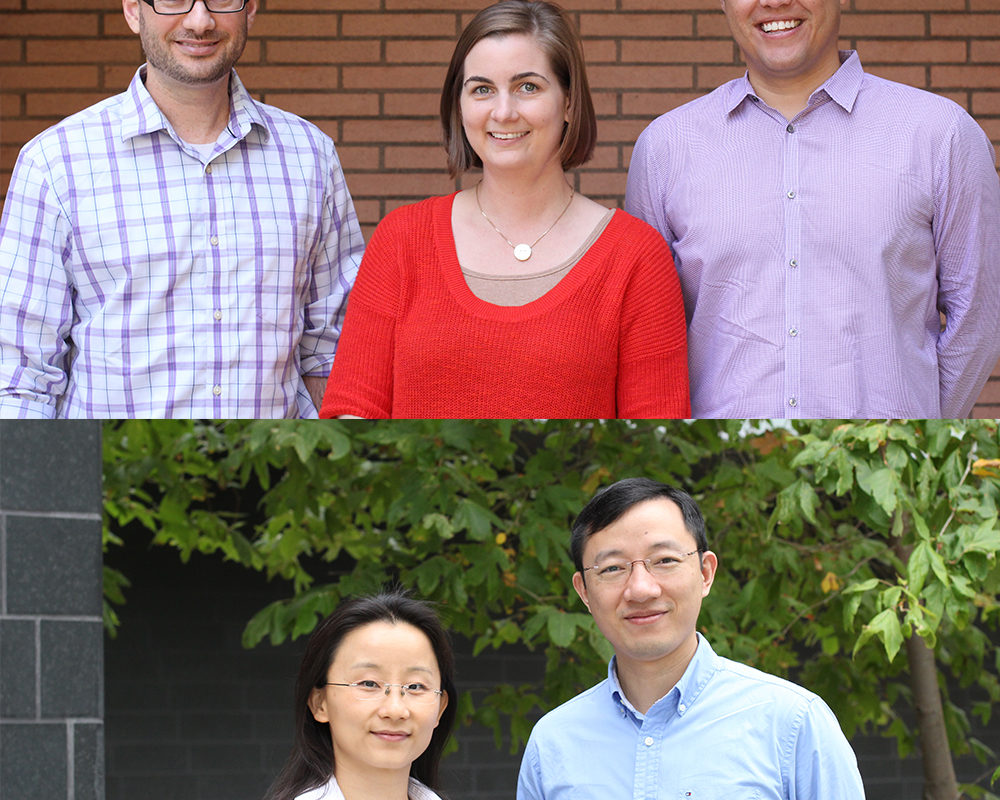
Two teams of scientists have won the inaugural Eli and Edythe Broad Innovation Awards in Stem Cell Biology and Regenerative Medicine at USC. This year’s competition provides $120,000 each to the teams for developing new ways to engineer and study what are known as “organs in a dish” or “organs on a chip.”
Since the 1950s, scientists have harvested organs from embryonic mice, and cultivated them in the laboratory to study their subsequent development—which is limited and abnormal. More recently, stem cells have provided scientists with a new tool for seeding self-assembling organoids, or miniaturized “organs in a dish.” Stem cells have also enabled scientists to create “organs on a chip” by arranging various cell types on inorganic scaffolds. These rudimentary organs aren’t ready for transplant, but they do provide new perspectives on mammalian organ development, repair and function.
Pushing the boundaries of this frontier are this year’s Broad Innovation Award winners.
One winning team brings together Justin Ichida, assistant professor of stem cell biology and regenerative medicine; Megan McCain, assistant professor of biomedical engineering, and stem cell biology and regenerative medicine; and Dion Dickman, assistant professor of biological sciences.
In their project, they will create a new “organ-on-a-chip” approach for studying amyotrophic lateral sclerosis (ALS), or Lou Gehrig’s disease. This paralyzing and fatal disease damages the intersections between motor nerve cells and muscle cells, called neuromuscular junctions. Normally, motor nerve cells release chemicals into these junctions, signaling to the muscle cells to contract, and enabling movement.
The team will use samples of skin or blood cells from patients with ALS to generate neuromuscular junctions on a gelatin scaffold, or “chip.” They will then use electrophysiological tests and high-resolution imaging to study these patient-specific neuromuscular junctions, to determine why they degenerate, and to discover potential drugs and therapies to rescue them.
“We hope that our neuromuscular junctions on a chip not only provide new insights into how to treat ALS, but also accelerate the study of other neuromuscular diseases,” said Ichida.
The other winning team unites Keyue Shen, assistant professor of biomedical engineering, and Rong Lu, assistant professor of stem cell biology and regenerative medicine.
The team will pioneer an “organ-in-a-dish” approach for studying the stem cells in bone marrow that constantly replenish the blood and immune systems. When a patient develops blood cancer or immune disease, bone marrow transplantation can sometimes offer a risky but effective cure—for those lucky enough to find a matched donor.
In the body, the bone marrow’s stem cells, which are called hematopoietic stem cells or HSCs, constantly adjust their behavior according to molecular signals, such as oxygen and proteins in their immediate environment, or niche. The scientists suspect that the HSCs respond to not only the type, but also the spacing of these molecular signals—which can be either delivered in the body fluids or presented on the surfaces of neighboring cells. The team will recreate these various aspects of the HSC niche in a dish.
“Although a single HSC can expand and reconstitute the entire blood and immune system in a living organism, maintenance or expansion of HSCs in a dish remains a daunting task after decades of research,” said Lu. “Our project has the potential to reveal critical environmental factors and signals governing stem cell survival and maintenance—which could eventually lead to a new source of HSCs for patients in need of transplants.”
Andy McMahon, director of the Eli and Edythe Broad Center for Regenerative Medicine and Stem Cell Research at USC, thanked The Eli and Edythe Broad Foundation for its critical support of these innovative projects.
“We are deeply grateful to the Broads for their visionary investment, which enables USC’s research community to reach across the disciplines of medicine, biology and engineering,” he said. “Only through cross-disciplinary collaboration can we develop organ-in-a-dish strategies to broadly enable our progress towards better therapies for patients.”
